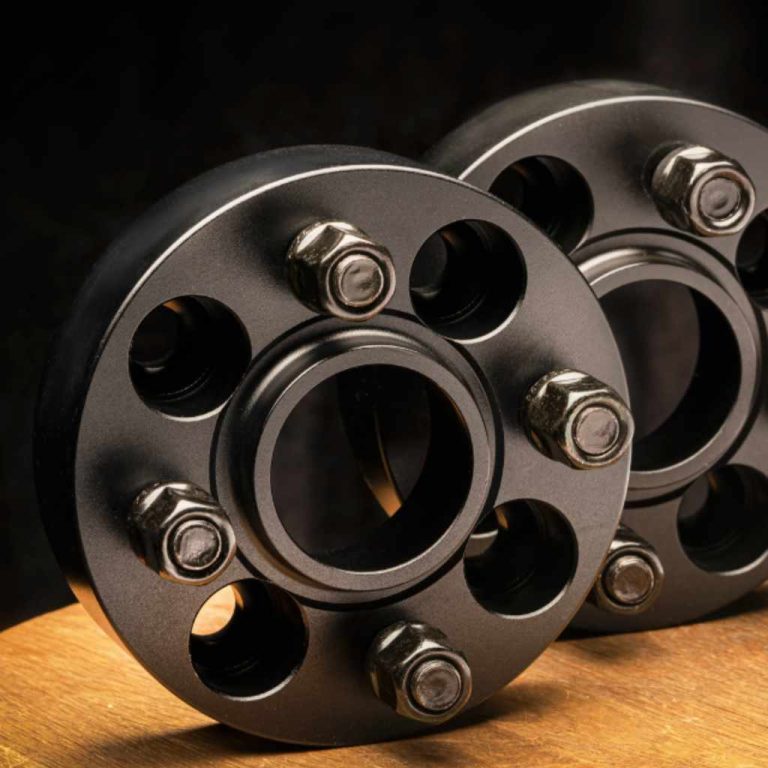Why Don’t They Make Cars Like They Used to: Nostalgic Truths
Cars are no longer made like they used to due to advancements in technology, evolving aesthetic preferences, and safety regulations. Modern cars prioritize efficiency, aerodynamics, and advanced features over the nostalgic design elements of older vehicles.
The shift towards computer-aided design has also played a role in the change, as old cars were primarily designed by people, while new cars are designed using computer simulations and algorithms. Additionally, the use of different materials such as aluminum instead of steel has contributed to the transformation in car manufacturing.
While some may miss the classic style and craftsmanship of old cars, the evolution of the automotive industry has brought about improvements in performance, safety, and sustainability.
The Allure Of Classic Cars
The allure of classic cars lies in their unique style, craftsmanship, and exclusivity. Many car enthusiasts ask, “why don’t they make cars like they used to? ” The answer involves a combination of factors such as improving aerodynamics, advancing technologies, evolving aesthetic preferences, safety regulations, and economic considerations.
Despite this, classic cars remain timeless and continue to captivate car lovers and enthusiasts of all ages.
Timeless Designs
Classic cars possess timeless designs that continue to captivate enthusiasts and collectors alike. These vehicles were crafted with meticulous attention to detail, showcasing elegant curves, sleek lines, and distinctive features. From the iconic fins of the 1950s to the bold muscle cars of the 1960s, each era brought its own unique design elements that have stood the test of time. The simplicity and purity of these designs evoke a sense of nostalgia, reminding us of an era when cars were not just modes of transportation, but works of art.
Emotional Connection
One of the main reasons why classic cars hold such allure is the emotional connection they create. These vehicles often evoke memories of a bygone era, reminding us of simpler times and cherished moments. Whether it’s a vintage convertible cruising down a coastal road or a classic sports car roaring on a race track, the experience of driving a classic car is unlike any other. The rumble of the engine, the smell of the leather interior, and the feel of the steering wheel all contribute to a sensory experience that modern cars often lack. Classic cars provide a tangible connection to the past, allowing us to experience the same joy and excitement as those who drove them decades ago.
Classic cars not only appeal to car lovers, but also to lovers of engineering, design, art, and history. These vehicles are a testament to human creativity and ingenuity, showcasing the craftsmanship and attention to detail that went into their creation. Each classic car tells a story, representing a particular era and capturing the spirit of that time. Whether it’s the elegance of a vintage Rolls-Royce or the raw power of a muscle car, classic cars have a timeless appeal that transcends generations.
Evolution Of Automotive Technology
The evolution of automotive technology has led to cars being designed for improved safety, efficiency, and performance. Modern vehicles incorporate advanced materials and technology to meet current standards and consumer demands. While classic cars may evoke nostalgia, the shift towards innovation ensures that today’s cars are better equipped for contemporary needs.
From Carburetors To Fuel Injection
The transition from carburetors to fuel injection revolutionized engine efficiency.
- Carburetors mixed air and fuel manually.
- Fuel injection delivers fuel directly to the engine cylinders.
The Rise Of Computer-aided Design
Computer-aided design transformed the automotive industry.
- Designers use software to create precise vehicle models.
- Allows for quicker prototyping and testing.
Safety And Regulations
When it comes to the evolution of car design, safety and regulations have played a pivotal role in shaping the modern vehicles we see on the roads today. Let’s delve into how modern safety standards and regulations have significantly impacted car design.
Modern Safety Standards
Modern cars are designed to adhere to stringent safety standards and regulations set by governing bodies. These standards encompass various aspects such as crashworthiness, occupant protection, and pedestrian safety, aiming to minimize the risk of injury in the event of a collision.
Impact On Car Design
The emphasis on safety has led to significant changes in car design. Manufacturers have incorporated features such as crumple zones, airbags, seatbelt pre-tensioners, and advanced braking systems to enhance occupant protection. Additionally, the use of high-strength materials and structural reinforcements has become a standard practice to improve crashworthiness.
Material Advancements
Material advancements in car manufacturing have revolutionized the industry, shifting focus to efficiency, safety, and innovation. The evolution from steel to aluminum and advanced materials enables lighter, more aerodynamic designs. Modern cars prioritize functionality over the nostalgic aesthetic appeal of older models.
The Shift From Steel To Aluminum
Material advancements have been one of the driving forces behind the evolution of the automobile industry. One of the most significant shifts in material usage has been from steel to aluminum. Car manufacturers have been using aluminum for various parts of the car, such as the body, engine, and wheels, due to its lightweight and anti-corrosion properties. The use of aluminum has led to cars being more fuel-efficient and eco-friendly, as well as improving their performance.
Benefits Of Modern Materials
Apart from aluminum, there are other modern materials that car manufacturers have been using, such as carbon fiber, magnesium, and titanium. These materials have unique properties that make them ideal for specific parts of the car. For instance, carbon fiber is exceptionally lightweight and strong, making it perfect for sports cars. Titanium is used in exhaust systems due to its heat resistance, while magnesium is used in wheels because of its lightweight.
Modern materials have not only improved the performance and fuel efficiency of cars but have also made them safer. Car manufacturers are now using high-strength steel, which is more durable and can withstand more impact than traditional steel. This has led to cars being safer in accidents and has contributed to a decrease in fatalities on the roads.
In conclusion, material advancements have been a significant factor in the evolution of the automobile industry. The shift from steel to aluminum and the use of modern materials have led to cars being more efficient, eco-friendly, and safer. These advancements have not only improved the driving experience but have also contributed to a better future for the environment and society.
Economic Factors In Car Manufacturing
When it comes to car manufacturing, economic factors play a crucial role in shaping the industry. Let’s delve into how economic considerations impact the production of cars.
Cost-efficiency
Car manufacturers prioritize cost-efficiency to maximize profits and remain competitive in the market.
- They streamline production processes to reduce expenses.
- Utilizing cheaper materials helps in cost-cutting.
- Outsourcing manufacturing to countries with lower labor costs is a common practice.
Market Demand
Market demand heavily influences the design and production of cars by manufacturers.
- They focus on producing models that align with current consumer preferences.
- Anticipating future trends helps in developing cars that meet evolving demands.
- Manufacturers adjust production based on market fluctuations to meet demand efficiently.
Consumer Preferences And Market Trends
Consumer preferences and market trends have significantly influenced the design and features of modern cars. Changing aesthetics and the demand for modern features have driven the evolution of the automotive industry.
Changing Aesthetics
The aesthetic preferences of consumers have shifted towards sleek, futuristic designs, departing from the boxy, classic look of older cars. The emphasis is on aerodynamics and visual appeal, leading to the adoption of smoother contours and bold, angular styling.
The Demand For Modern Features
Consumers now expect advanced features such as infotainment systems, driver-assist technologies, and fuel-efficient engines. The demand for enhanced safety features and connectivity options has driven manufacturers to prioritize the integration of these modern technologies into their vehicles.
Environmental Considerations
Environmental considerations play a significant role in the evolution of car manufacturing. With advancements in technology and changing aesthetic preferences, modern cars prioritize factors such as improving aerodynamics, meeting safety regulations, and considering economic considerations. As a result, cars no longer look like they used to, as car manufacturers strive to create vehicles that are more efficient and sustainable for the environment.
Fuel Efficiency
Modern cars prioritize fuel efficiency to reduce environmental impact.
Emission Standards
Stringent emission standards ensure cars are eco-friendly and reduce pollution.
The Rarity And Exclusivity Of Classics
Classic cars hold a special allure due to their rarity and exclusivity. These vintage vehicles evoke a sense of nostalgia and admiration.
Collectibility
Classic cars are highly sought after by collectors for their historical significance and unique designs.
Investment Potential
Owning a classic car can be a lucrative investment opportunity, as these vehicles often appreciate in value over time.
Challenges In Replicating Classics
When it comes to replicating classic cars, several challenges hinder the process. From legal and licensing issues to technological incompatibility, car manufacturers face numerous obstacles in recreating the iconic designs and features of vintage automobiles.
Legal And Licensing Issues
Recreating classic cars involves navigating complex legal and licensing hurdles. Obtaining the rights to reproduce specific designs and trademarks can be a convoluted process, often requiring negotiations with multiple parties and meticulous attention to intellectual property laws.
Technological Incompatibility
The technological advancements in modern vehicles pose a significant barrier to replicating classics. Integrating vintage designs with contemporary safety features, emissions standards, and performance technologies presents a formidable challenge for manufacturers.
Modern Interpretations Of Classic Designs
Modern interpretations of classic designs are becoming increasingly popular as people yearn for the nostalgia of the past. Many wonder why they don’t make cars like they used to, but the truth is that advancements in technology, safety regulations, and economic considerations have influenced the way cars are designed and manufactured today.
Retro-inspired Models
Modern interpretations of classic designs have given rise to a trend of retro-inspired models. Car manufacturers are blending nostalgia with modern technology to recreate iconic designs.
The Balance Of Old And New
When it comes to modern interpretations of classic designs, the key lies in striking a balance between old-school charm and contemporary innovation. Car companies are reviving vintage aesthetics while incorporating cutting-edge features.
Frequently Asked Questions
Why Don’t They Make The Old Style Cars Anymore?
Old style cars are not made anymore due to advancements in technology, safety regulations, and changing consumer preferences. Modern cars prioritize efficiency, aerodynamics, and new materials over the aesthetics and design of old cars.
Why Are Cars No Longer Being Made?
Cars are no longer being made like they used to because of several reasons. Firstly, car manufacturers have focused on improving aerodynamics and advancing technologies. Secondly, there has been an evolution in aesthetic preferences, leading to changes in car designs.
Additionally, safety regulations have also played a role in shaping the modern car industry. Lastly, economic considerations have driven the need for more efficient and cost-effective production methods.
Why Aren’t Cars Made Of Steel Anymore?
Car companies no longer make cars out of steel because they have found better alternatives. They started using materials like aluminum, which is rustproof and easier to shape than steel. Additionally, advancements in rustproofing and welding techniques have made aluminum a viable option.
Furthermore, improving aerodynamics, evolving aesthetic preferences, and safety regulations have also contributed to the shift away from steel.
Why Are Old Cars So Cool?
Old cars are cool due to their experience, style, exclusivity, and timeless craftsmanship, appealing to car enthusiasts and lovers of engineering, design, art, and history. It’s not just about efficiency and speed, but the overall nostalgic and aesthetic appeal.
Conclusion
The evolution of car design reflects a combination of factors like advancing technology, safety regulations, and changing consumer preferences. While modern cars may lack the charm of older models, they offer improved performance, efficiency, and safety features. Embracing the advancements in car manufacturing allows us to enjoy the best of both worlds.






